William H. Gray III Is Finally Getting His Memorial. Five Artists Rise To Create It
Plans for a William H. Gray III memorial at 30th Street Station arrive at a critical moment, honoring Black history amid erasure and revision.

The Cira Centre felt more like a joyful homegoing service rather than a day of artists presentations. But that is where a life well-lived will lead you– to reflection, to reverence, to rejoice. That is the kind of life Congressman and Reverend William H. Gray III lived. Gathering for the presentation of artists renderings for the William H. Gray III Memorial Foundation’s Living Legacy event, the appreciation for the man who some called “Congressman,” some called “Reverend,” some called “Bill,” and some who called family, was palpable.
Gray, who left a legacy of care for the community, made history in his political career, becoming the first Black majority whip in congressional history. Well known for his work to end apartheid in South Africa, his service as a special advisor to Haiti, his leadership of the United Negro College Fund, Gray is regarded as a titan amongst titans. While 30th Street Station was renamed in his honor in 2020, the public art projects proposed Tuesday will create another opportunity to reflect on Gray’s life and career.
The timing of this moment feels resonant and intentional. While the Trump administration has erased or revised accounts of Black history, plans for a memorial for Gray in one of the most active transportation hubs in the state of Pennsylvania, 30th Street Station, forging forward feels needed, even urgent.
“If we don't do this, then shame on us. Shame on us,” said State Senator Vincent Hughes. “If we don't do it, especially in an environment that we're in right now, where there is a conscious effort to destroy Black contributions, then shame on us.”
State Representative Jordan Harris agreed, harkening to the importance of names in places where people in our community frequent. “Kids walk around here in schools that's named after people that hated them. We park our cars on streets where people didn't like us,” said Harris. “Look at some of the names of these schools that our kids go to, the names of those schools are of racists and segregationists and other ‘-ists’. But to be able to go to a train station that is named after a man who loved us. And didn't just love us with his words, but loved us with his actions. It's powerful.”
Capturing that powerful legacy would be a herculean task for any artist. With the additional challenge of presenting those ideas to the very people who knew and loved Gray, the final five artists selected for the memorial had their work cut out for them.
Here’s a look at the renderings presented on Tuesday.
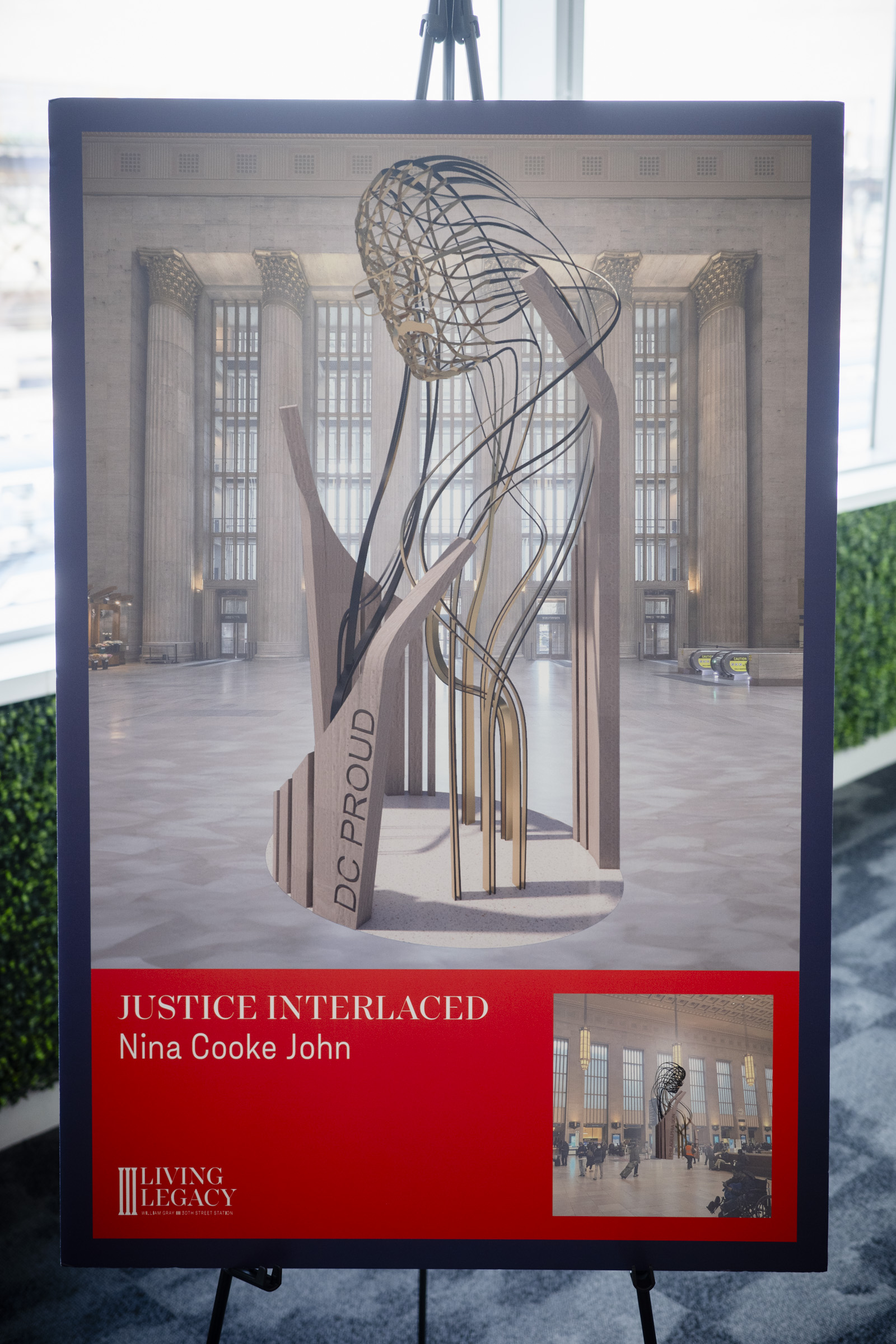
Among the finalists is Nina Cooke John, whose rendering entitled “Justice Interlaced” creates the face of Congressman Gray from towering bars of metal that come together. John was inspired by the train tracks of the very station where the memorial would be housed. “I personally feel like the role of monuments in honoring great people is it allows the everyday person to see some greatness in themselves.” John said.
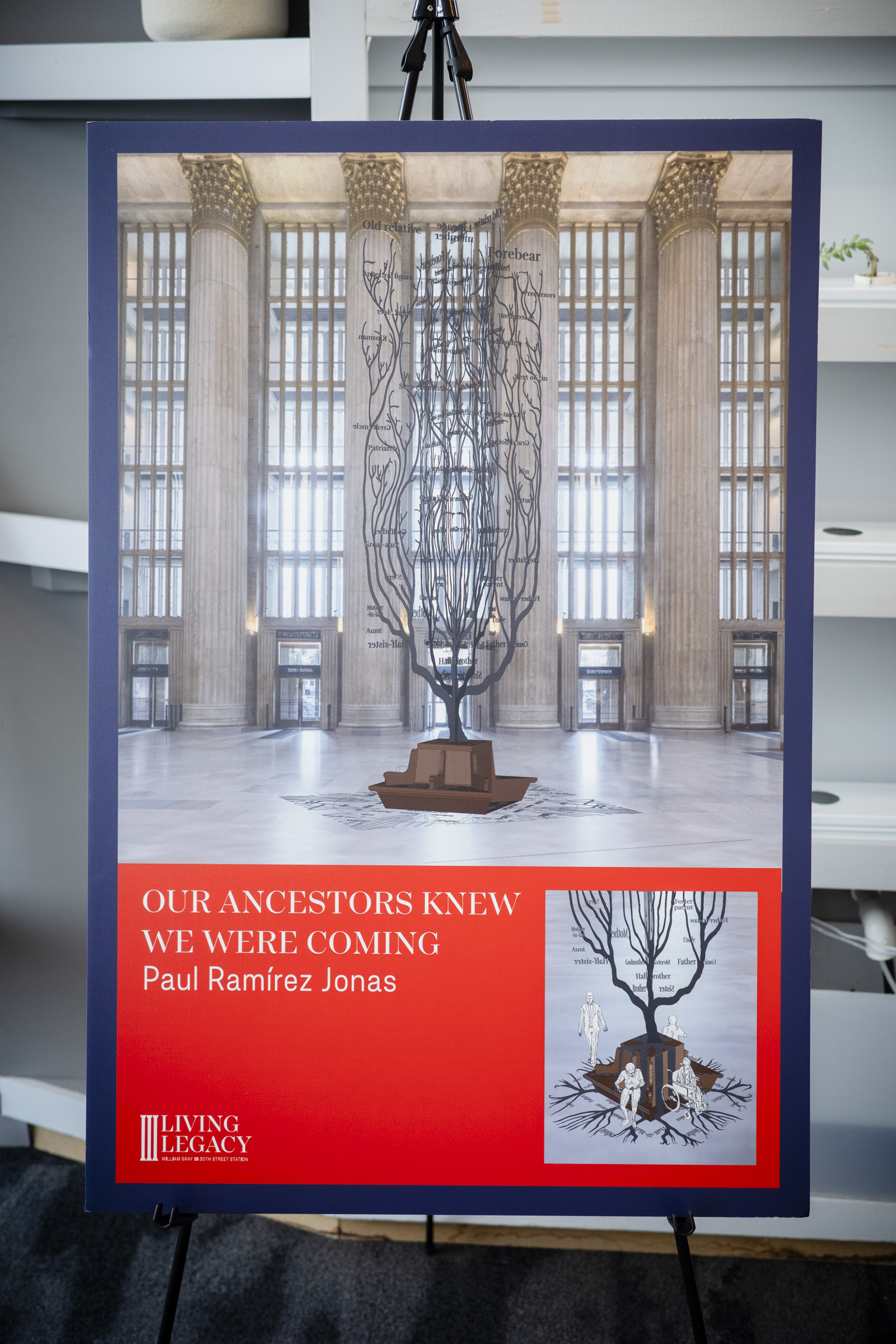
Paul Ramirez Jonas, a professor at Cornell with a major project in Philadelphia already in the works, offered a more abstract rendering. Ramirez Jonas' rendering for the memorial was a giant ancestral tree anchored by a bench that would match the current benches of 30th Street Station and whose roots spread to the floor. His rendering was less about centering Congressman Gray and more about leading others to see themselves in the long legacy of humanity.
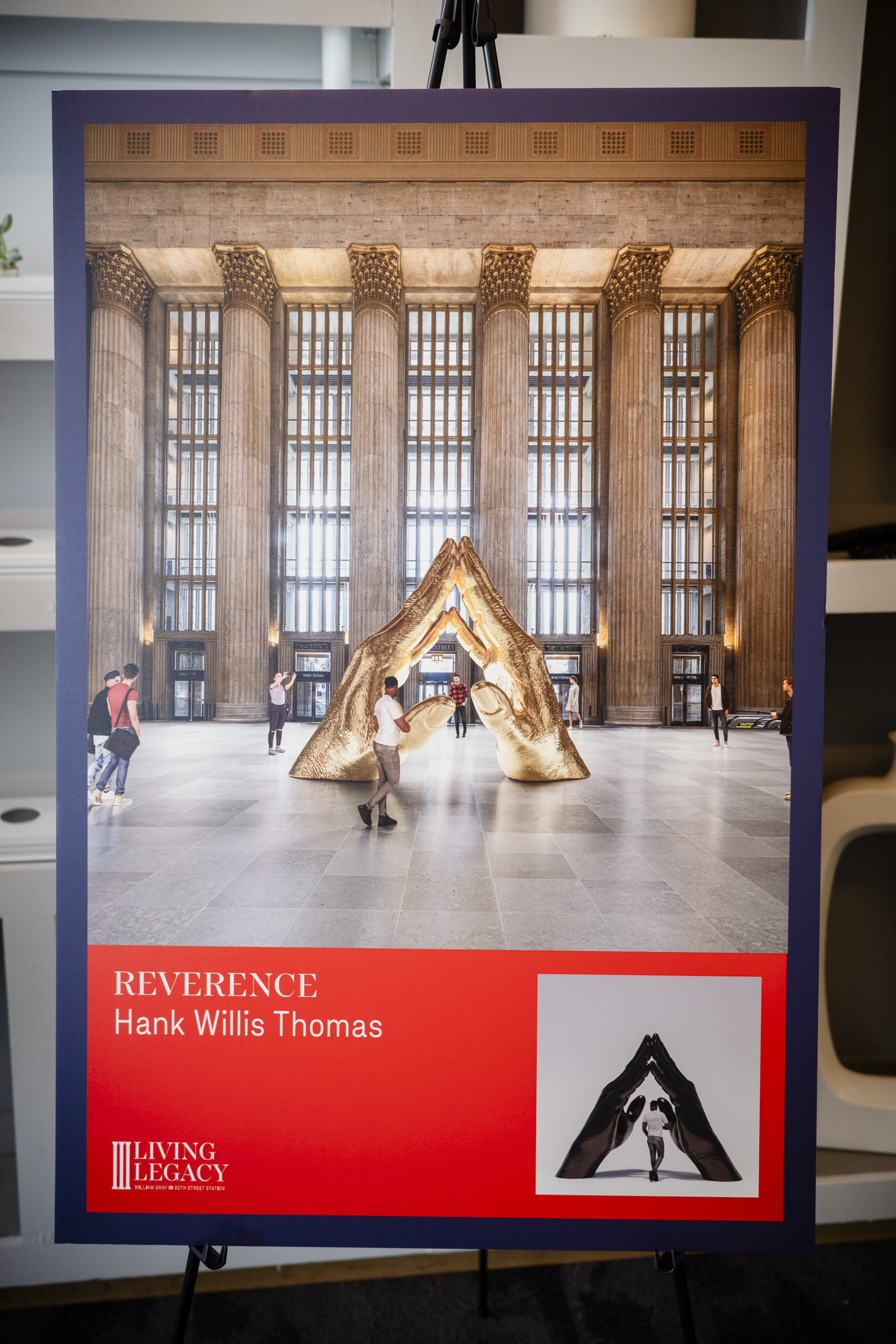
Hank Willis Thomas, has deep connections to Philly. The son of iconic Philadelphia artist and historian Deborah Willis, Thomas has forged his own artistic name in the city. Memorably, his piece, "All Power To All People,” a giant afro pick sculpture, temporarily replaced the Frank Rizzo statue in 2018. His proposal, a rendering of the hands of Congressman Gray, entitled “Reverence” evokes contemplation and prayer, both harkening back to the legacy of Gray. Thomas asked himself how many times Gray might have held his hands in such a way, either in deep thought or calling on his Maker. “I wanted to make a piece that kind of calls to memory,” said Thomas. “This sensation of awakening. People can experience the work as an opportunity to reflect in that way.”
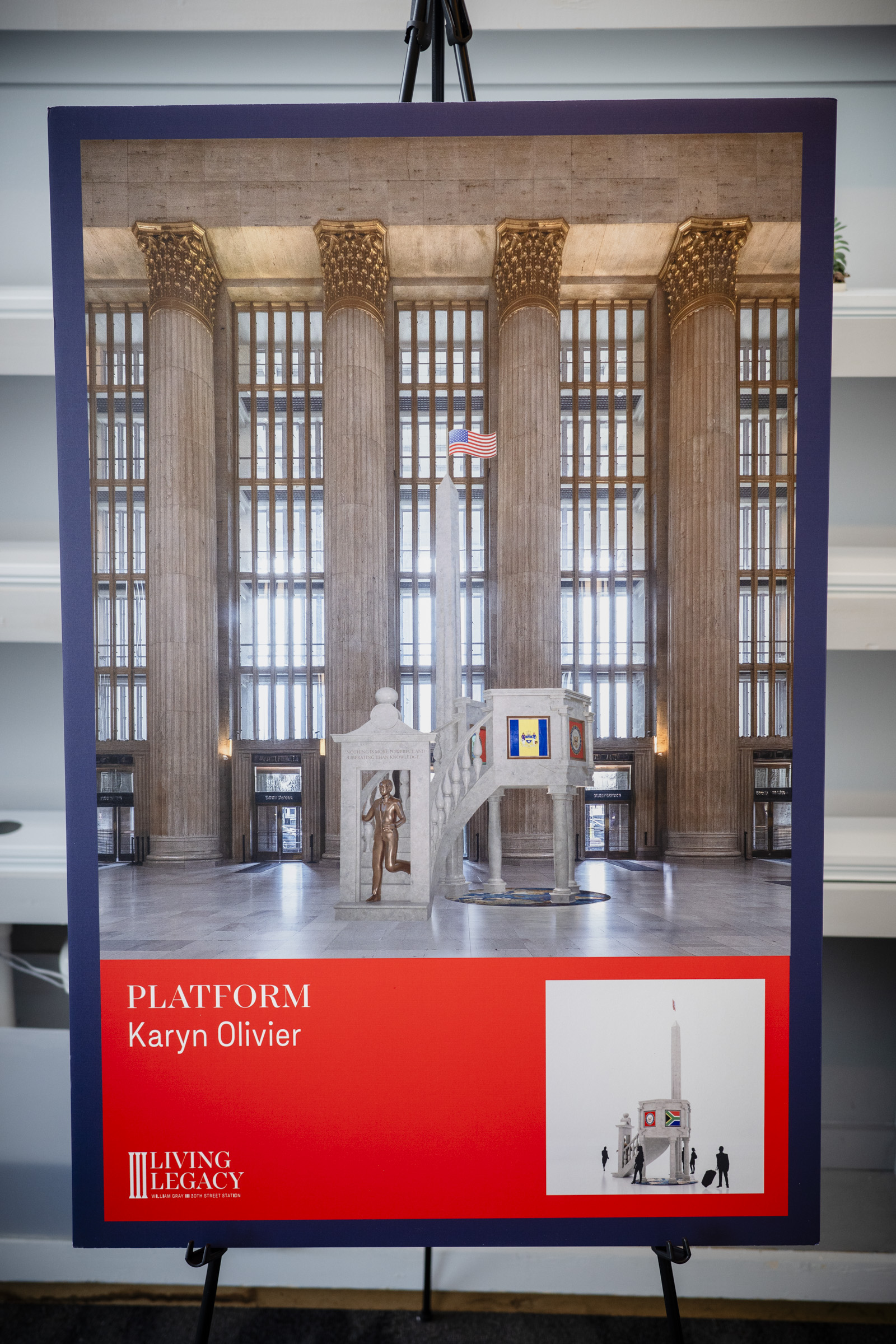
Karyn Olivier, a professor at Temple University, presented her rendering, called “Platform”. Platform features a bronze statue of Gray standing in the stairway of a platform flanked by an obelisk reminiscent of the Washington Monument. Olivier’s platform holds many meanings. The platform could represent the House of Representatives where Congressman Gray handled legislation. That platform could also represent the church where Gray nurtured a community of faith, Bright Hope Baptist Church. That platform could represent the movements Congressman Gray helped guide.
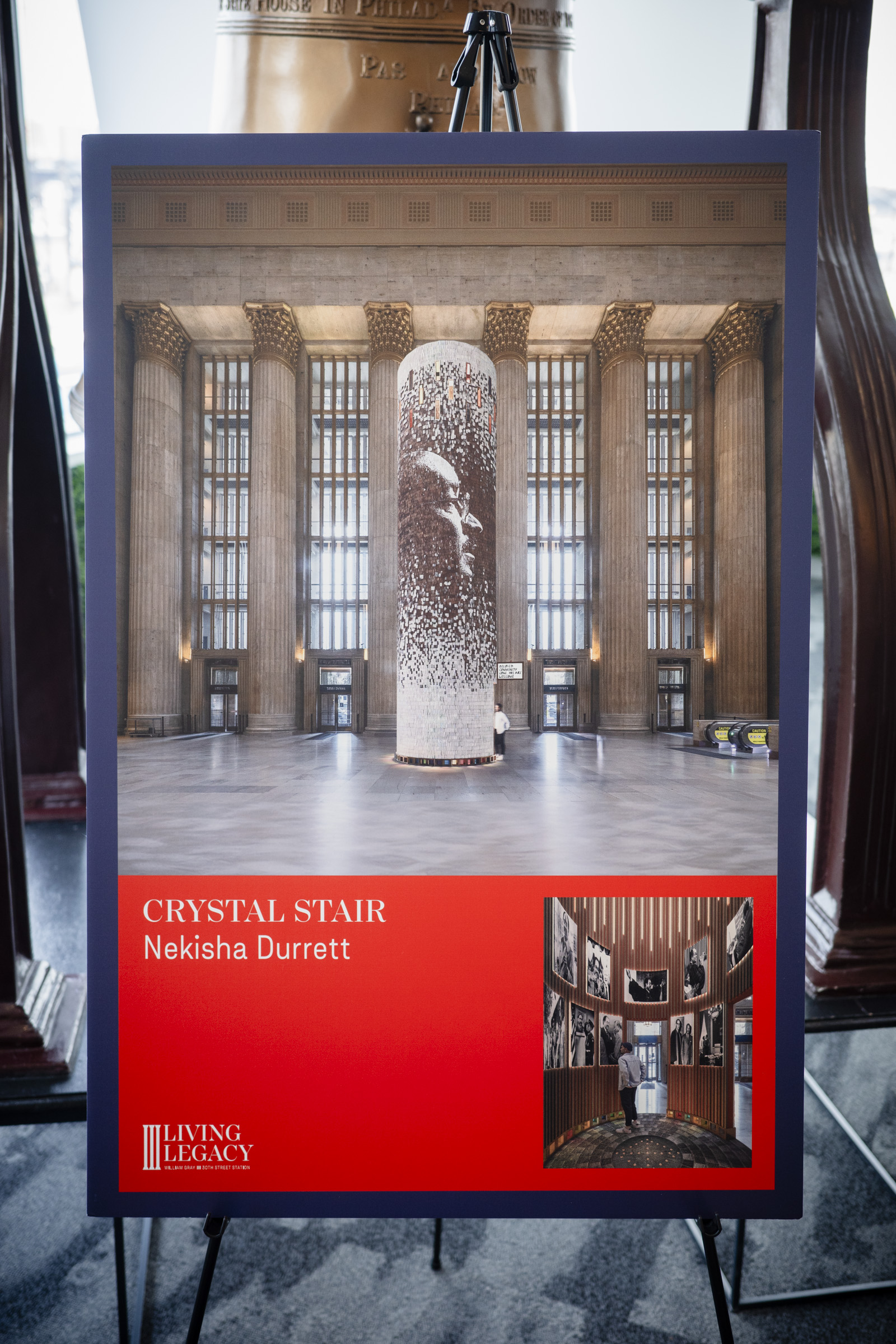
Nekisha Durrett, the artist behind a compelling new monument in Bryn Mawr, also presented a rendering. The final artist to present, Durrett’s work, entitled “Crystal Stair”, evokes Langston Hughes’s poem, “Mother To Son.” Durrett’s rendering is an interactive pillar, a commentary on the pillar that Congressman Gray was to multiple communities. The pillar would feature a space where observers could enter and reflect on Gray’s life and legacy. She cited her travels to ruins of Rome as inspiration for the pillar that would bear Gray’s profile emerging from numerous tiles. “I envisioned that this would be that this piece would be, would look like, something that had just kind of been there all along, or maybe predated the station.”
The final selection for the memorial is scheduled for July 31st. Until then, the artists and their renderings are available for viewing at the William H Gray Memorial Foundation’s site.





